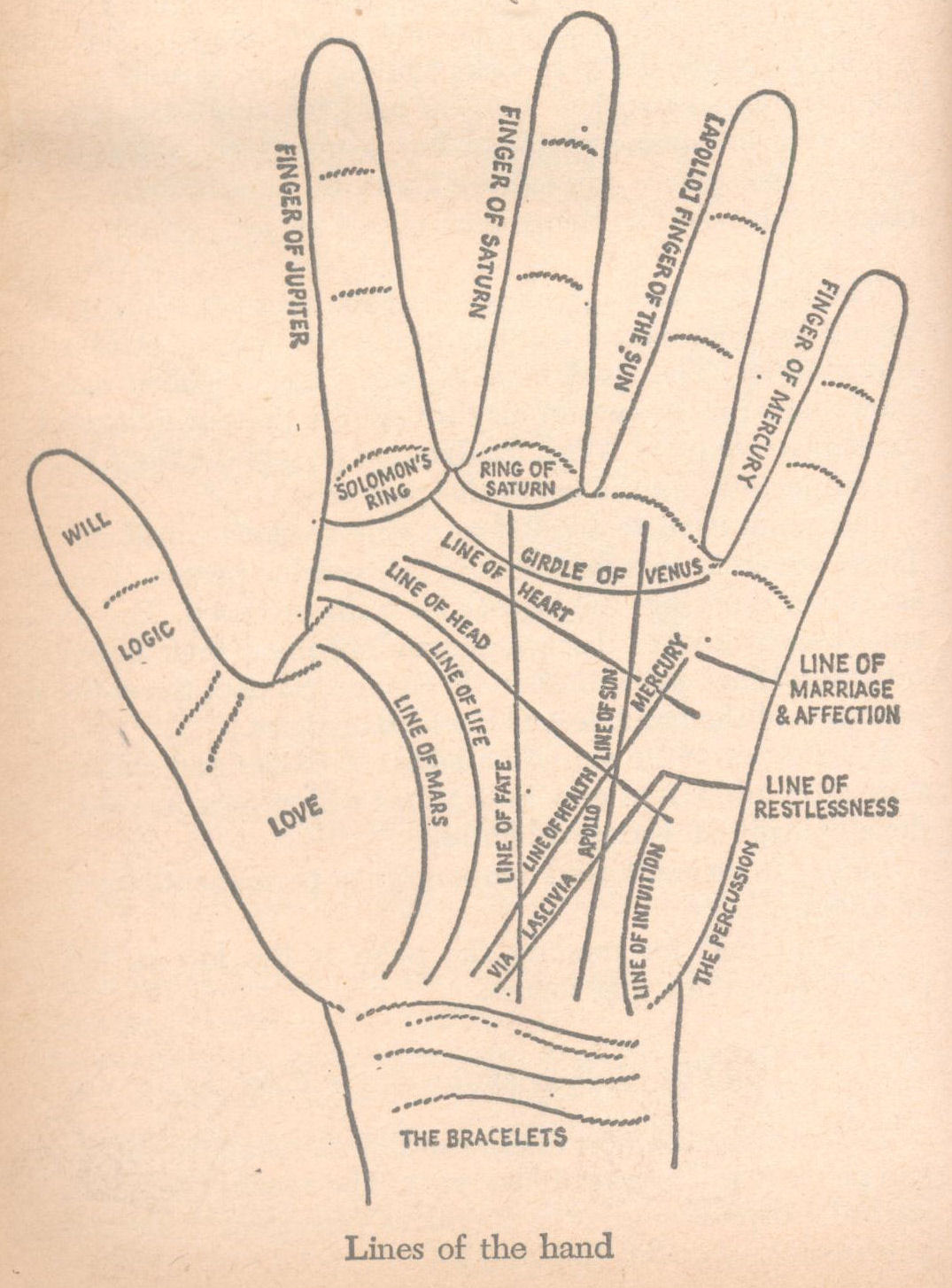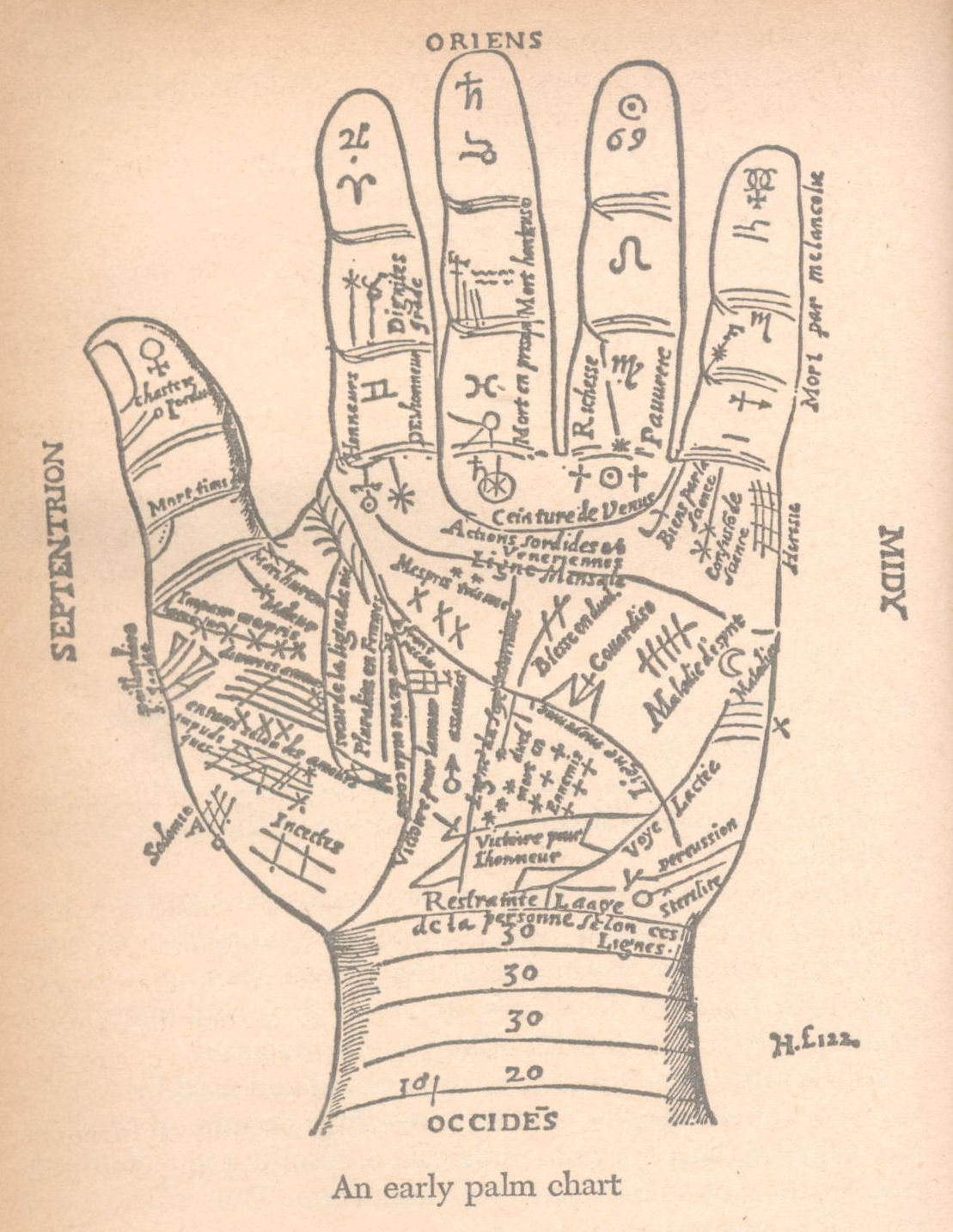Category Archives: PALMISTRY
10.1 THE METHOD OF READING A PALM
10.1 THE METHOD OF READING A PALM
*********************************

1. Determine the type of the hand by the shape of the fingers and palm. It will be one of five types. The square (orderly), the conical (inspirational), the spatulate (energetic), the pointed (idealistic), or mixed (adaptable).
2. Test flexibility and texture. Determine the angle of the thumb. Look for smooth or knotty finger joints. Type the fingernails. Note peculiarities.
3. Check the fingers for length. Long, for detail Short, for impulsiveness. Compare phalanges for irregularities in size and shape.
4. Examine the set of fingers, whether high, low, or normal. Check the slant of the fingers and the flat or cushioned appearance of each phalange.
10. PALMISTRY
10. PALMISTRY
*************
The subject of palmistry, or the study of the human hand, is composed of two parts: chirosophy, or the mystical significance of the lines, markings, and developed areas; and chirognomy, or an analysis of the shape and formation of the hand, thumb, and fingers.

While the two are closely interwoven, the emphasis was originally on chirosophy, which was closely identified with astrology, as witness the names of the planets as applied to the areas called mounts. The lines, too, were generally interpreted in divinatory terms, as with other psychic sciences.
At the same time, formations were noted and used by expert in the art of chirosophy, and their readings became so accurate that scientific surveys were undertaken, resulting in a definitive classification of shapes and their indication. Thus chirognomy came into vogue.






